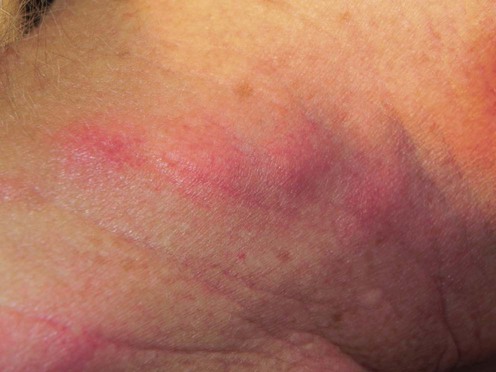Sweet syndrome

(Courtsey of Misha Rosenbach MD.)
Second-line therapies
Third-line therapies
Peripheral ulcerative keratitis: an extracutaneous neutrophilic disorder. Report of a patient with rheumatoid arthritis, pustular vasculitis, pyoderma gangrenosum, and Sweet’s syndrome with an excellent response to cyclosporine therapy.
Wilson DM, John GR, Callen JP. J Am Acad Dermatol 1999; 40: 331–4.







 Oral corticosteroids
Oral corticosteroids Topical and intralesional corticosteroids
Topical and intralesional corticosteroids Potassium iodide
Potassium iodide Colchicine
Colchicine Indomethacin
Indomethacin Pulse intravenous corticosteroids
Pulse intravenous corticosteroids Dapsone
Dapsone Clofazimine
Clofazimine Doxycycline
Doxycycline Metronidazole
Metronidazole Cyclosporine
Cyclosporine Interferon
Interferon Cyclophosphamide
Cyclophosphamide Chlorambucil
Chlorambucil Etretinate
Etretinate Etanercept
Etanercept Thalidomide
Thalidomide Anakinra
Anakinra IVIG
IVIG